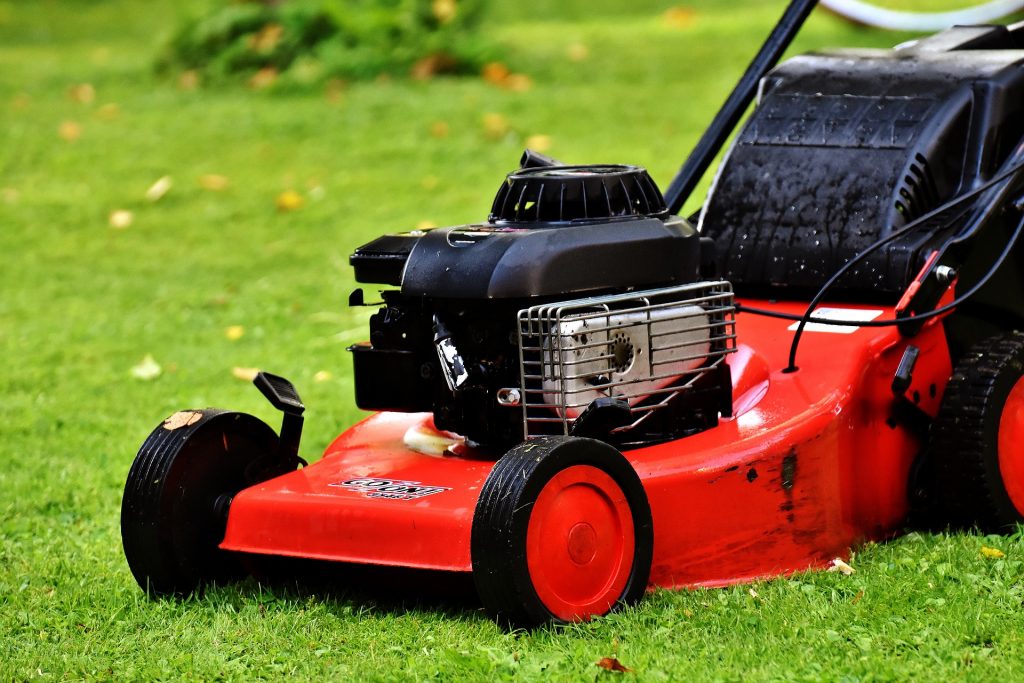
Mowing your lawn is probably the most common lawn maintenance task you perform. Keeping your turf looking great means regular mowing, as much as once a week during peak growing season. So it is easy to overlook the importance of this weekly chore. But if you really want your lawn to look its best, you need to know to mow your lawn properly. When you follow these tips for mowing your lawn, you can maintain a healthy, beautiful lawn all summer long.
![Our Top Tips for Mowing Your Lawn [infographic]](https://theturfgrassgroup.com//wp-content/uploads/2020/04/Our-Top-Tips-for-Mowing-Your-Lawn-infographic.jpg)
How Often to Mow
The first thing you need to know about mowing your lawn is how often to mow. Many homeowners just mow on a schedule. Once a week, need it or not, they schedule their mowing like any other chore. But mowing isn’t something to do on an exact schedule. Instead, you need to mow your lawn according to its schedule, not yours.
The goal of mowing is to maintain a uniform height for your turf, regardless of the season or environmental conditions. Many factors affect the growth rate of your grass. Everything from the season to the temperature to the rainfall to the state of your soil can impact your turf’s growth. So there is no way to set a precise schedule for mowing. The best thing to do is to monitor your turf’s growth and mow when it reaches a certain height.
The maximum height for TifTuf Bermudagrass is two inches, and as we’ve mentioned before, maintaining the maximum height for a residential lawn has any benefits. Just be sure not to chop off more than one-third of the height of your grass at a time. For TifTuf Bermudagrass, that means mowing when the grass reaches no more than three inches. Ideally, mow TifTuf Bermudagrass when it reaches about two-and-a-half inches, and mow it back to two inches. In the summer, during peak growing season, that should be about once a week. In early spring, your schedule might stretch up to two weeks between mows.
When to Mow
In addition to deciding how often to mow, you should consider the best time of day for mowing your lawn. There are differences of opinion about how significant lawn mowing times are to the health of your turf. While many factors contribute to lawn health more than mowing times, we still think it is worth considering when you should mow your lawn.
The primary considerations when selecting a time to mow your lawn are how wet the lawn is and how much your stress you are inflicting on your lawn. With that in mind, let us consider how mowing at different times of day affects your lawn.
Avoid Early Morning Mowing
It may seem like a good idea to mow early in the morning when it is cool and you won’t sweat as much. But for the sake of your grass, we don’t recommend mowing early in the morning. In the morning, your lawn is likely to be wet with dew. There are two reasons not to mow a wet lawn. First, if the ground is too moist, you can dig ruts into the ground with your mower. You can even rip up or crush some of your turf.
Dew alone won’t usually make your soil moist enough to cause problems. But mowing wet grass can cause another problem. As your mower cuts the damp grass, wet clippings can clump together. This is bad for your mower and your lawn. We have, in the past, recommended that you don’t bag your grass clippings. Allowing the clippings to naturally decompose in your lawn returns vital nutrients to the soil, and the blanket of clippings helps keep the soil moist. But when wet clippings clump, they don’t decompose as quickly. And clumps of wet clippings can also sit on top of the grass and suffocate it instead of fertilizing it.
The Worst and the Best Times for Mowing Your Lawn
Mowing in the middle of the day is similarly problematic. Mowing, even if you use a sharp blade and take off no more than one-third of the grass, is stressful to your lawn. Add to that the heat of the day, and you may end up with brown tips on your grass.
The best time to mow your lawn is mid to late morning, after the dew has dried but before it gets hot. It will allow the grass time to bounce back from the shock of pruning before it gets too hot. And it will also save you from a laborious chore in the midday sun. Early evening is okay, too, if it’s getting cool. But try to avoid mowing late in the evening. Grass won’t heal as well at night.
Mow Your Lawn With Sharp Blades
You can think of mowing your lawn as similar to pruning a tree or bush. You wouldn’t hack off a tree limb with a dull blade. So don’t do that to your grass either. A rotary mower works by creating suctions that pulls the blades of grass up straight. Then a single spinning blade lops off the top of the grass. If the blade is sharp, it will make a nice clean cut and leave your grass neatly shorn. But if the blade isn’t sharp, or if it has dents or chips, the results can be much uglier.
Instead of slicing your grass, a dull blade can rip off the top of your grass. This is incredibly stressful to your turf and leaves a ragged-looking lawn. When your mower blade isn’t making a clean cut, you also lose control over the precise height of the cut, since the blades are being pulled and ripped instead of sliced.
Mow to the Correct Height
We’ve mentioned this in other posts, but we think it bears reiterating. Know the ideal height range of your turf variety and stick within that range. A lot of research goes into determining the ideal height range for each variety of turf, and staying in that range will keep your grass healthy. For example, TifTuf Bermudagrass and JaMur Zoysiagrass should be maintained at one-half inch to two-inches tall. But TifGrand Bermudagrass and Zeon Zoysiagrass shouldn’t be kept more than one-and-a-half inches tall.
Whatever the recommended height range of your turf, we recommend sticking to the higher end of that range for residential lawns. Some commercial applications, particularly for sports fields, require short grass. But lawns of short grass can be tougher to maintain.
If you aren’t keeping a sports field, there are many benefits to keeping your grass longer. Longer grass shades the ground better, so the soil can retain moisture. Taller grass also crowds out weeds better than short grass. And you can mow on a slightly more relaxed schedule than a lawn that needs to be kept at precisely one-half-inch for ideal gameplay.
As usual, never cut off more than one-third of the height of your grass. Cutting more will put too much stress on the turf.
Mix It Up When Mowing Your Lawn
When it comes to chores like lawn mowing, it’s easy to get into a rut. But ruts are the last thing you want on your prized lawn. To avoid creating actual ruts, avoid mowing in the same pattern each time you mow your lawn. Mowing over the same spot week after week can crush crass, compact soil, and even create ruts. Instead, try mowing in one direction for a couple of weeks—for example, east to west—and then switch it up—e.g., north to south.
Switching up the direction you mow your lawn also keeps your grass from bending in the direction you mow. After a few times, grass can start to lean in the direction you mow your lawn. Avoid that tendency by mowing in different directions every couple of weeks.
Maintaining a beautiful, healthy lawn takes regular maintenance and attention. Mowing is your most common lawn maintenance task, so it’s essential to get it right. If you follow these tips and use a high-quality turf like those from The Turfgrass Group, you can look forward to a thick, good-looking lawn all season long.
